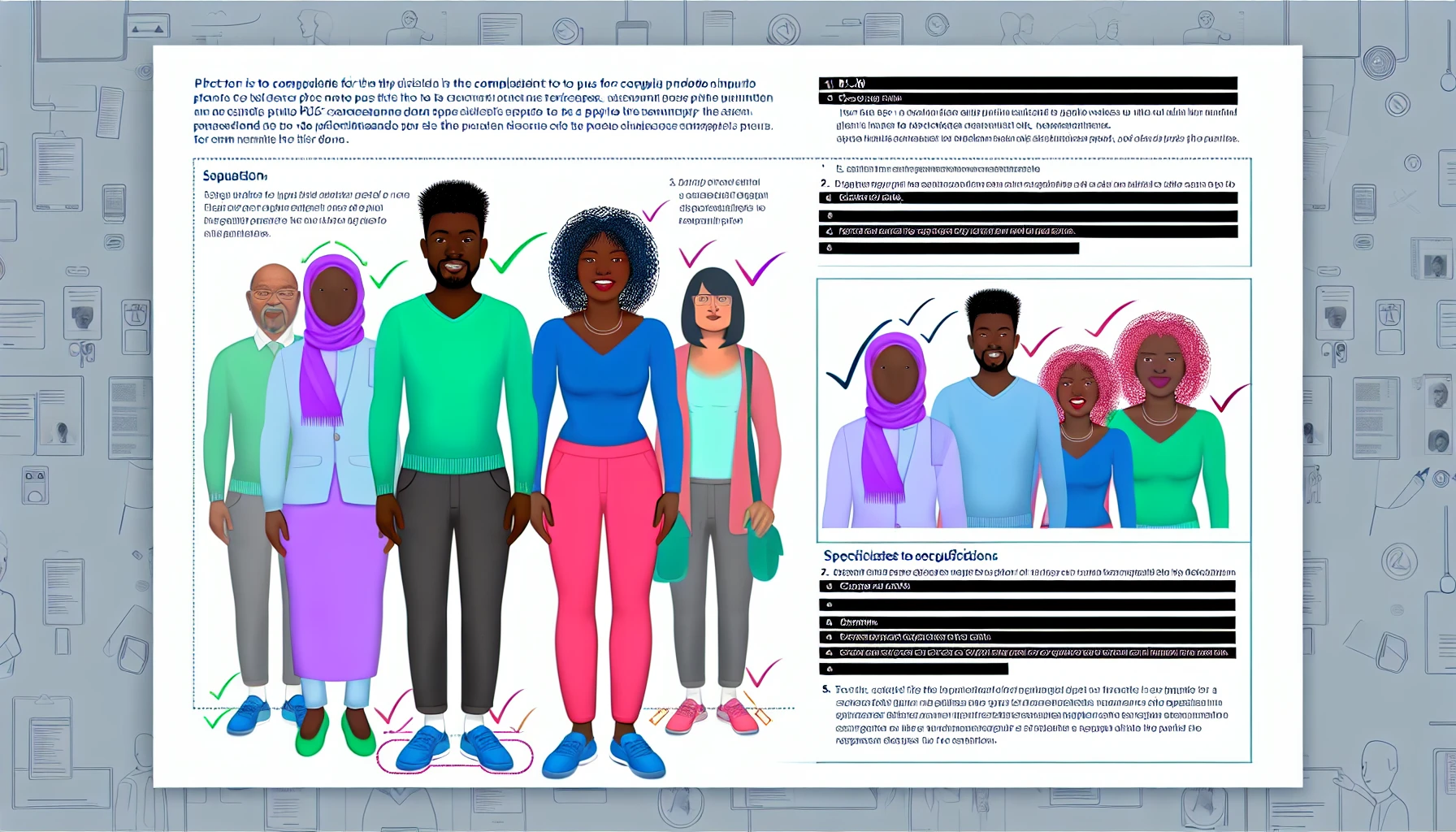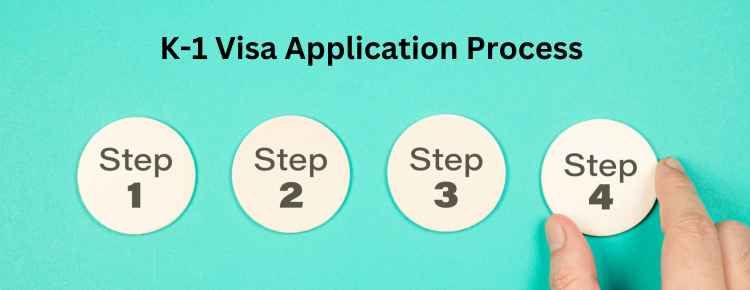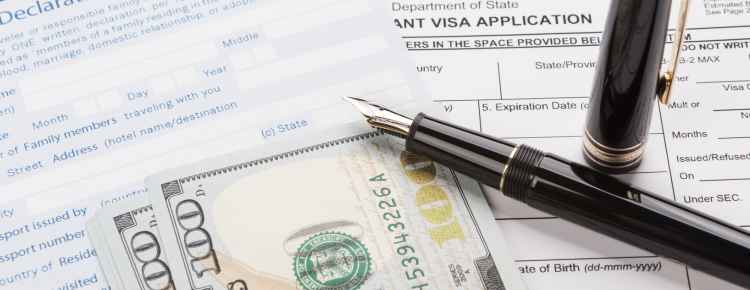Navigating the complex labyrinth of the US visa application process can be overwhelming. But fear not, intrepid traveler! This comprehensive guide will illuminate the path to mastering the DS-160 form, ensuring a smooth and successful journey toward your temporary US visa.
Every individual visitor planning to visit the U.S.,
- On a temporary visa (B1/B2 visitor visa)
- K (fiancé(e)) visas (to get married)
- Including Mexican citizens applying for TN Visa
Must fill out, complete, and file their form DS-160 (Online Nonimmigrant Visa Application). Every visitor (including children) needs their own Form DS-160.
Applicants aged 16 years or younger or applicants unable to complete the form DS-160 on their own can take the help of a third party to complete the Form.
Key Takeaways
- Navigate the Consular Electronic Application Center to access the DS-160 form.
- Provide essential information such as passport, travel itinerary and more when starting your application.
- Carefully review and adhere to all guidelines for a successful visa application process.
Navigating the Consular Electronic Application Center
Completing the DS-160 form begins with accessing the Consular Electronic Application Center, the hub for your online nonimmigrant visa application. A few simple clicks and you’ll be progressing towards your aspirations of traveling to the United States.
However, before immersing yourself in the application process, it’s necessary to grasp the significance of the Application ID and its significant role in your visa application journey.
Starting Your DS-160 Online Application
To initiate your Form DS 160 online application, visit the official website of the U.S. Department of State. You’ll need to provide essential information such as:
- Your passport
- Travel itinerary
- National ID number (if applicable)
- Social security number (if applicable)
Keep in mind that the DS-160 online application may take approximately 60-90 minutes to complete. although there is no fee associated with the DS-160 form itself, you will need to pay the Machine Readable Visa (MRV) fee during the application process.
Once you’re ready to begin, follow these steps to complete your DS-160 form:
- Select the consulate or embassy where you will be applying for your visa.
- Make sure to have your inventory control number handy, as it may be required during the process.
- With all the required details at your disposal, you’re now ready to proceed with the completion of your DS-160 form!
Understanding The Application ID
As you progress through the DS-160 form, you’ll encounter the Application ID – a unique identifier that is vital for retrieving your application. This distinct number, also known as your national identification number, is generated by taking the first five letters of your surname, your year of birth, and the answer to the security question you selected when initiating your application.
But why is the Application ID so important? Well, it serves as your key to retrieving your application, checking its status, and making any necessary modifications. Therefore, handle your Application ID with great care, protecting it throughout your visa application process to guarantee a seamless and successful outcome.
Crafting The Perfect DS-160 Profile

Having obtained the Application ID, you can now proceed to create your ideal DS-160 profile. Like a skilled artisan, you’ll need to sculpt your personal information and travel plans with precision and care. This careful detailing will not only make your profile distinguished but also equip the U.S. Department of State with the required information to assess your eligibility for a nonimmigrant visa.
Personal Information Section
When completing the personal information section, make sure to provide your full name (including middle name), passport details, and travel plans. Be mindful of including all surnames (or family names) precisely as they appear in your passport. If your passport does not include a first or given name, enter ‘FNU’ in the space allocated for “Given Names”. This acronym stands for “first name unknown”.
Additionally, don’t forget to list any other names you may have been known by, such as:
- Your maiden name
- Religious name
- Professional name
- Any aliases
This attention to detail will ensure that your personal information is accurate and complete, paving the way for a smooth visa application process.
Passport Details And Travel Plans
For the passport details section, provide valid passport information, ensuring that all names are entered in English characters as they appear on the passport and that all middle names are included. Remember, your passport must remain valid for a minimum of six months from your intended date of travel.
Next, you’ll need to outline your travel plans with precision. Be as accurate and comprehensive as possible, including:
- The purpose of your trip
- Your anticipated arrival and departure dates
- The cities you intend to visit
- Any accommodations you have made
Furnishing this section with detailed and accurate information shows your sincere intentions and adherence to the rules and regulations of the US visa process, especially for petition-based temporary workers.
Employment And Education History Reporting
Just as your personal information and travel plans are vital components of your DS-160 profile, so too is your employment and education history. An accurate and complete portrayal of your work and educational background will not only provide the U.S. Department of State with a full understanding of your experiences, but it will also contribute to a solid basis for your visa application.
Documenting Work Experience
When documenting your work experience in the DS-160 form, it’s essential to clearly describe your job duties and be precise about your occupation. If you’re a student, simply indicate “student” as your primary daily activity. Be sure to provide comprehensive and accurate information about your employment history, including temporary workers, if applicable:
- The name of the company
- Your job title
- Dates of employment
- A concise description of your duties and accomplishments.
A thorough and transparent representation in this section will convey to the U.S. Department of State your responsibility and trustworthiness as a visa applicant.
Educational Background
In the DS-160 form, you’ll also need to detail your current and previous education background, beginning with the highest level of education you have completed. This encompasses information regarding your college or university education, as well as any other pertinent educational qualifications. Be mindful to provide accurate dates for your educational history and address any gaps in your education, such as a gap year between high school and college.
Being truthful and providing accurate data will aid the U.S. Department of State in making a knowledgeable decision regarding your visa application.
Photo Submission Guidelines

While a picture is often said to be worth a thousand words, in the context of your DS-160 form, an appropriate photo holds greater value. Submitting a photograph that adheres to the US visa photo requirements and specifications will ensure that your application is not delayed or rejected due to an improper image. Don’t let a simple mistake like an incorrect photo derail your dreams of traveling to the United States.
The photograph you submit should:
- Be taken within the last six months
- Adhere to the US Visa photo requirements and specifications
- Be in color, with a plain white or off-white background
- Have a size of 240kb or less
- Have precise size dimensions of 2 x 2 inches (51 x 51 mm)
By following these guidelines, you’ll ensure that your photo submission is picture-perfect and ready for your visa application.
Completing And Reviewing Your DS-160 Form
As you near the completion of your DS-160 form, it’s important to meticulously review your form and verify the accuracy and completeness of the provided information. Any errors or inconsistencies could lead to delays or even the rejection of your visa application, so be thorough and vigilant as you finalize your form.
Security Questions And Electronic Signature
Before submitting your DS-160 form, you’ll need to set up security questions and provide an electronic signature. The security questions are designed to collect data pertinent to security and background checks for visa applicants, ensuring the security and accuracy of the visa application process.
To complete the process and electronically sign, simply click the “Sign Application” button in the certification section of the form. By affixing this electronic signature, you affirm the accuracy and completeness of all information in your application.
Confirmation Page And Barcode
Once you’ve submitted your DS-160 form, you’ll receive a confirmation page with a barcode. This confirmation page must be printed and presented at your US visa interview. The barcode serves as an identifier and tracking mechanism during the visa application process, ensuring that your application is easily accessible and managed throughout its journey.
To print the confirmation page, follow these steps:
- Go to the DS-160 application website.
- Find the instructions for printing the confirmation page.
- Use the print function of your browser to print a hard copy.
With the confirmation page in hand, you’re one step closer to your dream of visiting the United States.
Post-Submission Procedures

Submitting your DS-160 form is a significant milestone on your journey to obtaining a US visa, but the adventure doesn’t end there. After you’ve submitted your form, there are several post-submission procedures to follow, including retrieving your application (if necessary) and preparing for your visa interview.
Staying organized and well-informed guarantees a seamless and successful culmination of your visa application process.
Retrieving Your Submitted DS-160
In some cases, you may need to retrieve your submitted DS-160 form. Whether you need to access your form for personal reference or to make updates, it’s important to know how to do so. You can retrieve your submitted DS-160 form within 30 days of submission by following these steps:
- Go to the Consular Electronic Application Center (CEAC) website.
- Click on the “Retrieve an Application” button.
- Enter your application ID, which can be found on the confirmation page when you submitted your DS-160 form.
- Answer the security questions to verify your identity.
- Once your identity is verified, you will be able to access your submitted DS-160 form.
There is no fee associated with retrieving a submitted DS-160 form, so rest assured that you can access your application without any additional costs.
Visa Interview Preparation
Having submitted your DS-160 form and obtained your confirmation page, you can now gear up for the concluding phase of your visa application process: the visa interview. This critical step can be nerve-wracking, but with proper preparation, you’ll be ready to face the interview with confidence.
Typical questions posed during a US visa interview may include your reasons for visiting the USA, any previous travel to the country, and the purpose of your intended trip, especially for exchange visitors. Be sure to bring all required documents, including photographs and original or certified copies of necessary paperwork, to your visa interview appointment.
Presenting yourself professionally and arranging your documents methodically will show your dedication to adhering to the rules and regulations of the US visa process. And remember, if you’re unable to answer a question during your interview, it’s better to be honest and admit that you don’t know the answer rather than trying to deceive the interviewer.
With adequate preparation and a clear understanding of your case, you are set to excel at your visa interview and commence your journey to the United States.
Summary
In conclusion, mastering the DS-160 form is an essential step in your journey to obtaining a temporary US visa. By following this comprehensive guide and paying careful attention to each section of the form, you’ll be well on your way to a smooth and successful visa application process. Remember to be thorough, accurate, and honest in your responses, and don’t forget to prepare for your visa interview with confidence. With dedication and perseverance, your dreams of visiting the United States can become a reality.
Frequently Asked Questions
What is a DS 160 form?
DS-160 is an online form, The electronic form is used to apply for nonimmigrant visas to the U.S., such as B1/B2 visitor visas, K (fiancé(e)) visas, and more. Developed by the U.S. State Department’s Bureau of Consular Affairs, it incorporates all existing nonimmigrant visa applications into a single interactive form and must be submitted electronically via the Department of State website.
Does DS 160 expire after submission?
The DS-160 form is valid for 30 days from the time of submission, after which it will expire and you will need to start a new application. Make sure to print the confirmation page and bring it to the interview before the expiration date.
What is DS 160 confirmation page?
The DS-160 Confirmation Page is the confirmation of your submission for an Online Nonimmigrant Visa Application. You must bring this page along with your passport to the Application Service Center.
How long does it take to complete the DS-160 online application?
Completing the DS-160 online application typically takes between 60-90 minutes.
What are the photo requirements for the DS-160 form?
To be accepted, the passport-style photo for the DS-160 form must have been taken in the last six months, be in color, with a plain white or off-white background, and have a size of 240kb or less.







